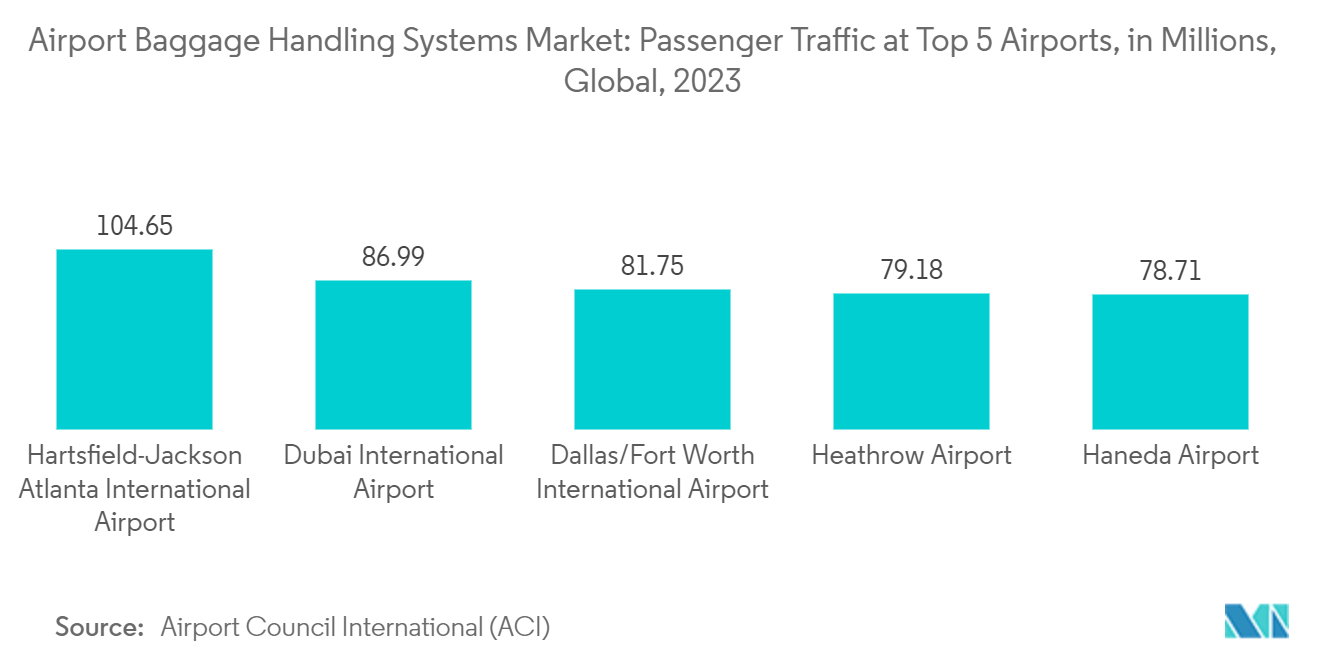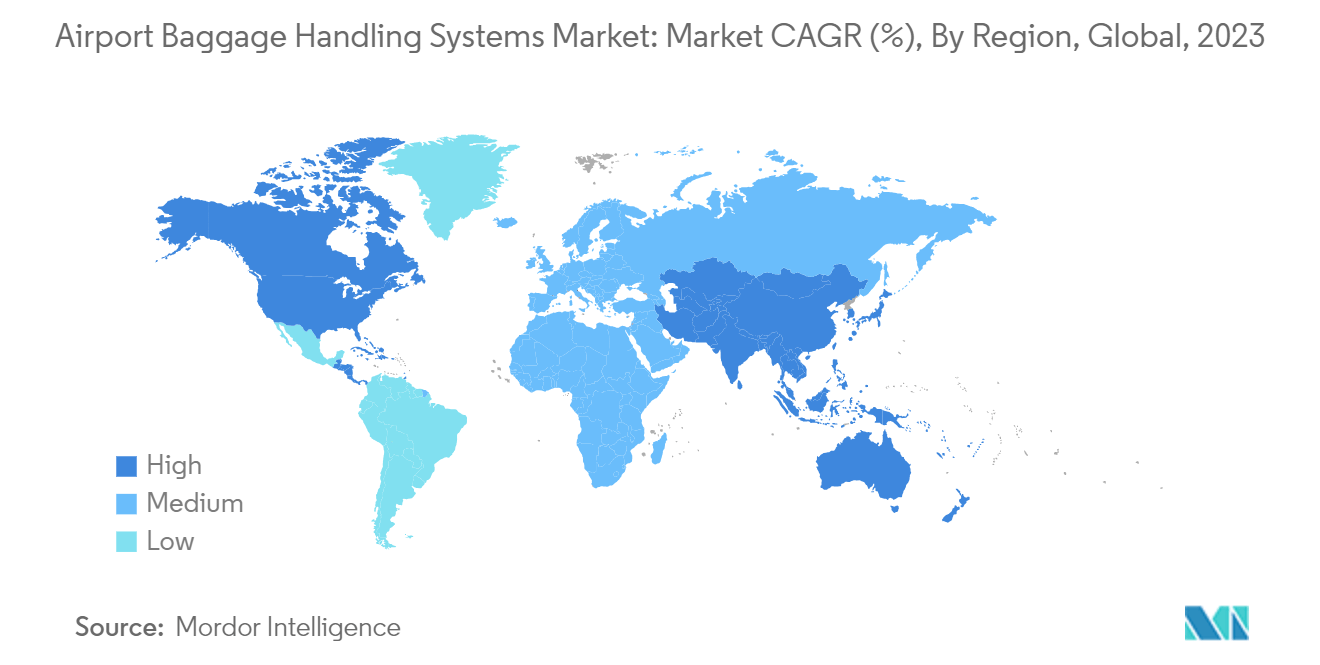Market Trends of Airport Baggage Handling Systems Industry
The Above 40 Million Segment is Expected to Witness Significant Market Growth During the Forecast Period
The above 40 million segment is expected to grow significantly during the forecast period. There has been a significant increase in the number of airports entering the above 40 million passenger handling capacity segment. This has been primarily due to the growing investments in expansions by major airports to cater to future passenger traffic and reduce congestion. For instance, in 2023, Atlanta International Airport recorded passenger traffic of approximately 104 million. In April 2024, the airport announced that its work module had been initiated with an investment of USD 1.4 billion. Under the investment, the airport's Concourse D, which has been in existence for 44 years, is set to undergo expansion. The expansion will involve increasing its footprint from 60 feet to 99 feet (18 to 30 meters), extending its overall length by 288 feet (87 meters). The project’s primary objective will be to enhance the travel experience and efficiently handle the substantial number of passengers that pass through the concourse daily. Its anticipated completion date is 2029.
Similarly, in July 2023, the United Arab Emirates announced that it aims to make Dubai’s Al Maktoum International Airport one of the world’s largest airports by 2050, with an annual capacity of up to 255 million passengers, through a huge investment of USD 33 billion. Furthermore, in November 2022, Hamad International Airport (HIA) unveiled its impressive airport expansion project to the world. With this expansion of Phase 3, the airport passenger capacity reached 58 million passengers per year. The final expansion phase began in January 2023 and is expected to be completed by 2025, boosting the airport's annual capacity to approximately 70 million passengers. Similar projects are ongoing in several other countries across different regions. Such airport expansion projects are anticipated to generate demand for new baggage handling systems that would efficiently process passengers and baggage in the airport.

Asia-Pacific Expected to Dominate the Market During the Forecast Period
Investments in airport infrastructure across Asia-Pacific have surged, mirroring the region's escalating passenger traffic. Notably, China, India, Japan, and South Korea have all experienced a sharp uptick in passenger numbers, prompting significant investments toward expanding existing airports and building new ones.
India, for example, unveiled plans in July 2023 to construct between 230 and 240 airports by 2030. Highlighting this trend, Chennai International Airport in Tamil Nadu, India, marked a milestone in April 2023 with the completion of its New Integrated Terminal Building (NITB) Phase-1. This modern terminal, covering 1,36,295 sq. m and costing INR 1,260 crores, is set to boost the airport's passenger handling capacity to 30 million annually. In a further move, the airport, in April 2024, introduced eight new self-baggage drop kiosks in its domestic terminal (T1), of which IndiGo secured four as it serves 60% of the airport's passengers.
Asia-Pacific countries are ramping up their airport capacities to match the surging air passenger numbers. For instance, as part of China's 14th Five-Year Plan (2021-2025), the nation is accelerating its investments in airport construction to bolster its civil aviation capacity. The Civil Aviation Administration of China (CAAC) aims to unveil over 30 new civil airports and boost civil aviation capacity by 43% under this plan. Similarly, in May 2024, two airports in Vietnam selected Vanderlande as their baggage handling systems (BHS) provider, leveraging Vanderlande's status as an Airport Lab Network Partner of the FTE Baggage Innovation Working Group. With such ambitious expansion strategies, the region's demand for new airport baggage handling systems is poised for growth over the coming years.


